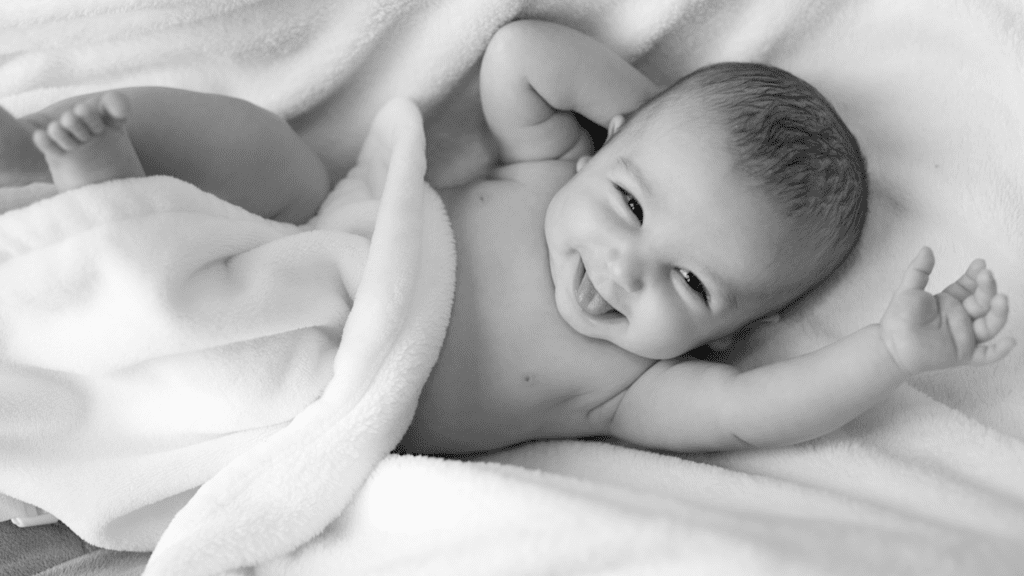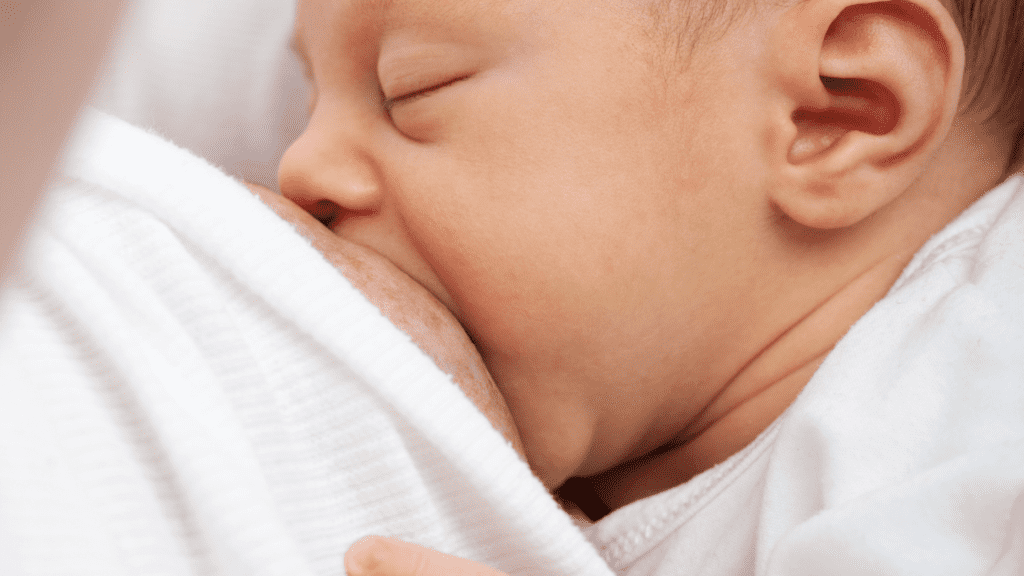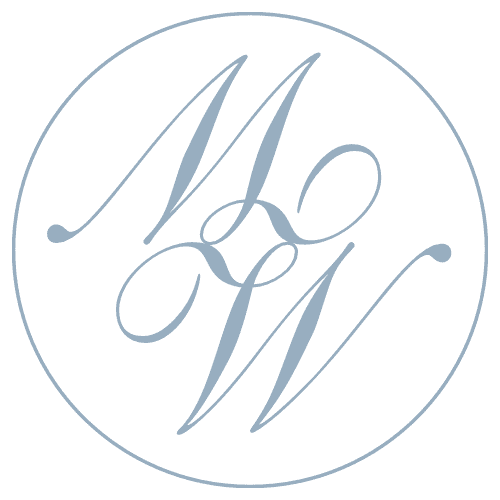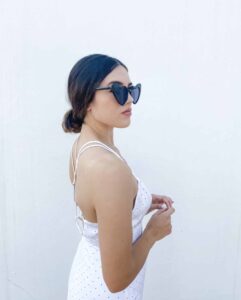We’ve all heard the saying that breast milk is “liquid gold”, right? There are many reasons why – but being the skincare fanatic that I am, I became interested in the anti-microbial qualities of breast milk and how it could work on acne. I’ve heard breast milk for baby acne is supposed to be a miracle treatment. It can also be the solution for lots of other things: eye infections, cradle cap, and even adult acne! So, how does breast milk help baby acne?
Below is an explanation, and how to make it work on your baby’s skin (or even yours!).

Does Breast Milk Help With Baby Acne?
To cut to the chase, can breast milk help baby acne? Yes! It can even help clean up your own acne.
Before going into it deeper, let’s start at the beginning.
Why Do Babies Get Acne?
What causes baby acne to flare up? Newborn skin is, well new. It’s still figuring out how to adjust especially after being in the womb for 9 months.
According to What To Expect, baby acne is usually caused by the mom’s leftover hormones circulating in the baby’s bloodstream after birth. It usually appears from 2-3 weeks old and is common until hormones level off. Hormones stimulate baby’s sensitive skin and oil glands. This makes pimples pop up.
How To Treat Baby Acne
Most of the time, baby acne and other skin problems go away on their own. But if it’s extreme, or you don’t want to wait you can express a few drops of breast milk directly from the breast to the affected area. Use a clean hand to spread it around baby acne, and let it dry.
After having my second baby recently, I would do this for any blemishes I saw!
Breastmilk Healing Properties
So why is breastmilk so valuable that they call it liquid gold? Aside from nourishing babies, it has some pretty powerful healing advantages to it.
Why Does Breastmilk Work For Acne?
Breast milk does have antimicrobial properties. It will work to help kill/reduce bacteria, so this is why it is great to help sensitive skin and clogged pores of acne bacteria on baby’s skin.
When Will Baby Acne Go Away?
The more dedicated you are at reapplying a few drops of fresh breastmilk, the sooner the acne might clear. If left untreated, it typically takes a few months after birth before the baby’s skin balances out and baby acne flare-ups go away.

Want more maternity related inspiration? Check out these blog posts:
Using Breastmilk For Adult Acne
So, if it works for baby acne, can it work for adult acne?
While they are different animals, in theory it can work the same way! Breast milk can be used to help calm irritated blemishes and to help heal them faster. Again, this goes back to the bacteria-killing properties in breast milk. One of the biggest culprits behind pimples is the p. acnes bacteria. Let breast milk fight off the bad bacteria and work as natural acne medication!
How To Use Breastmilk For Acne
As mentioned before, apply freshly expressed breast milk onto a clean face. Apply enough to cover area and let it dry. Wash it off after 30 minutes or leave on overnight and wash in morning.
Using Breastmilk As Skincare
Can You Use Breastmilk On Wrinkles?
Some people even use breast milk for wrinkles or other skin problems.
According to scientists, breast milk contains lauric acid which is anti-bacterial. It can fight acne bacteria. Breastmilk can also be used to soften skin and hydrate it which might lead to lessening the appearance of fine lines. There are some other unconventional ways to use it as well. Click this article which highlights all the ways breast milk is used in skincare.
Breast milk as face wash, breast milk for acne, and breast milk for eczema are some ways that people have used it on themselves.
If you are a nursing mother or are close to one, try to apply breast milk next time you experience an acne breakout! Breast milk is liquid gold and can be used to help get your confidence back.
I hope this guide will help you dealing with acne whether on your baby’s skin or your own! If you are interested in reading more about acne and other ways to clear it up, check out my acne archives.
Best, Mia
This content is for informational purposes only, and what has worked for me personally based on my own opinions. I am not a professional/medical doctor, and you should always consult your doctor or dermatologist on what will work best for you. The information presented here is not legitimate, official advice from a professional. If you choose to rely on any information from this blog, you do so at your own risk. Please refer to the “Blog Disclaimer” tab in the menu bar to read more information and the official disclaimer statement.


